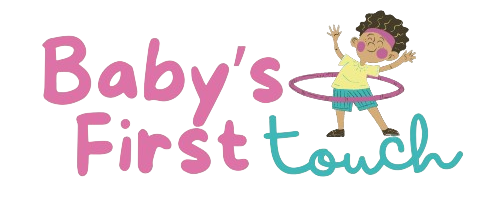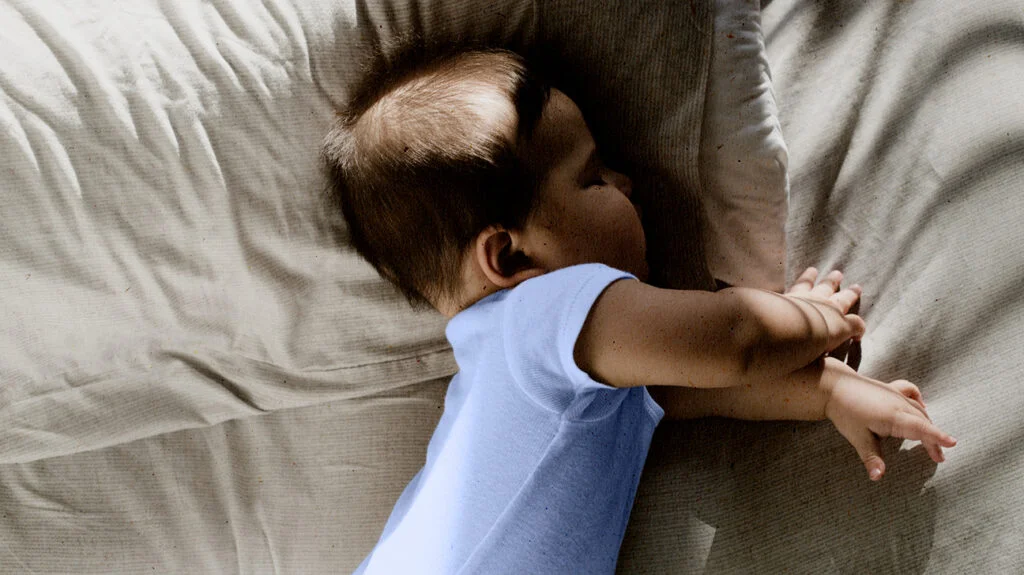Table of Contents
- Understanding Psychotic Disorders in Children: Beyond the Myths
- The Pillars of Treatment: A Comprehensive, Multi-Modal Approach
- 1. Medication Management: Finding Balance and Relief
- 2. Psychotherapy: Building Skills and Understanding
- 3. Family Therapy and Psychoeducation: Strengthening the Support System
- 4. School Support and Accommodations: Facilitating Learning and Inclusion
- 5. Coordinated Care and Case Management: The Team Approach
- Practical Tips for Parents and Caregivers: Your Role in the Journey
- Navigating Challenges and Maintaining Hope
- Conclusion: A Journey of Resilience and Support
Navigating the Path: A Compassionate Guide to Supporting Children with Psychotic Disorders Through Treatment
Hearing that your child might have a psychotic disorder can feel like the ground has vanished beneath your feet. It’s a diagnosis shrouded in misunderstanding and fear, often conjuring images far removed from the reality of these complex neurodevelopmental conditions. But here’s the most important thing to hold onto: hope is real, and effective treatment exists. Supporting a child through this journey isn’t easy, but with knowledge, compassion, and the right help, you can navigate this path together towards improved well-being and a brighter future.
Psychotic disorders in childhood and adolescence, often termed early-onset psychosis (EOP) or childhood-onset schizophrenia (COS), are rare but serious mental health conditions. They disrupt a child’s thoughts, perceptions, emotions, and behaviors, making it difficult to distinguish between what’s real and what isn’t. This isn’t a reflection of parenting or character; it’s a medical condition requiring specialized care.
This article is designed to be your starting point – a comprehensive, yet human guide to understanding the treatment landscape for children with psychotic disorders. We’ll explore the different facets of care, demystify complex terms, offer practical advice, and underscore the vital role of family support. Let’s walk this path together.

Understanding Psychotic Disorders in Children: Beyond the Myths
Before diving into treatment, it’s crucial to have a clearer picture of what we’re dealing with. Psychosis isn’t a single illness but rather a collection of symptoms. In children and adolescents, these might include:
- Hallucinations: Seeing, hearing, smelling, tasting, or feeling things that aren’t there. Auditory hallucinations (hearing voices) are most common.
- Delusions: Strongly held false beliefs that persist despite evidence to the contrary (e.g., believing someone is plotting against them, having special powers).
- Disorganized Thinking/Speech: Difficulty organizing thoughts, jumping between topics, making illogical connections, or speech that is hard to follow.
- Disorganized Behavior: Actions that seem bizarre, inappropriate, or lack purpose; difficulty with goal-directed activities; sometimes catatonia (lack of movement or response).
- Negative Symptoms: A reduction or absence of normal functions. This can include reduced emotional expression (flat affect), lack of motivation (avolition), decreased speech (alogia), social withdrawal, and reduced ability to experience pleasure (anhedonia).
It’s important to note that psychotic symptoms can sometimes occur in other childhood conditions (like severe depression, bipolar disorder, or due to trauma or substance use). A thorough evaluation by a qualified child and adolescent psychiatrist or psychologist is essential for an accurate diagnosis.
Why Early Diagnosis and Intervention Matter
The brain is incredibly dynamic during childhood and adolescence. Identifying and treating psychotic disorders early offers the best chance to:
- Reduce symptom severity and duration: Timely treatment can lessen the impact of acute episodes.
- Improve long-term outcomes: Early intervention is linked to better social and academic functioning later in life.
- Minimize disruption: Lessens the impact on schooling, friendships, and family life.
- Prevent secondary issues: Reduces the risk of developing co-occurring conditions like depression, anxiety, or substance use problems.
- Enhance family coping: Provides families with support and strategies sooner.
Ignoring early warning signs or delaying assessment can unfortunately lead to more significant challenges down the road. If you have concerns, trust your instincts and seek professional advice. Recognizing the early warning signs of psychosis in youth is paramount.
The Pillars of Treatment: A Comprehensive, Multi-Modal Approach
Treating childhood psychotic disorders isn’t about a single magic bullet. It requires a coordinated, multi-faceted approach tailored to the individual child’s needs, symptoms, age, and circumstances. Think of it as building a strong support structure with several key pillars.
1. Medication Management: Finding Balance and Relief
Antipsychotic medications are often a cornerstone of treatment, particularly for managing the ‘positive’ symptoms like hallucinations and delusions. It’s understandable for parents to have concerns about medication for their child, but these treatments can be crucial for restoring stability and enabling the child to engage in other therapies.
- Types of Medication: Second-generation antipsychotics (SGAs), also known as atypical antipsychotics, are generally preferred for children and adolescents due to a potentially better side-effect profile compared to older, first-generation medications. Examples include risperidone, aripiprazole, olanzapine, quetiapine, and paliperidone.
- The Goal: The aim is to use the lowest effective dose to manage symptoms while minimizing side effects. It’s about finding a balance that improves quality of life.
- Monitoring is Key: Children and adolescents are particularly sensitive to side effects, which can include weight gain, metabolic changes (increased blood sugar or cholesterol), sedation, movement problems (less common with SGAs but still possible), and hormonal changes. Regular monitoring by the prescribing physician (ideally a child and adolescent psychiatrist) is essential. This includes tracking weight, height, blood pressure, and periodic blood tests.
- Finding the Right Fit: Not every medication works the same way for every child. It may take time and careful adjustments, under medical supervision, to find the most effective medication and dosage.
- Collaboration: Open communication between parents, the child (as appropriate for their age), and the medical team is vital for successful medication management. Report any changes or concerns promptly.
It’s crucial to remember that medication is usually most effective when combined with other forms of therapy.
2. Psychotherapy: Building Skills and Understanding
Therapy plays a critical role in helping children understand their experiences, develop coping mechanisms, improve social skills, and manage the emotional impact of the disorder. Various therapeutic approaches may be used:
- Cognitive Behavioral Therapy for Psychosis (CBTp): This specialized form of CBT helps children identify and challenge distressing thoughts (including delusions) and develop coping strategies for hallucinations. It focuses on reducing the distress and impairment associated with symptoms, rather than necessarily eliminating them entirely. It helps them build resilience and practical coping skills.
- Individual Therapy: Provides a safe space for the child to talk about their experiences, fears, and challenges with a trained therapist. This can help with emotional regulation, self-esteem, and understanding their illness.
- Social Skills Training: Psychotic disorders can significantly impact social interaction. This training helps children learn and practice essential social cues, communication skills, and relationship-building techniques in a structured environment.
- Cognitive Remediation Therapy (CRT): Focuses on improving cognitive functions that may be affected by the disorder, such as attention, memory, and problem-solving skills, often using targeted exercises and strategies.
- Art or Play Therapy: Especially for younger children, these creative therapies can provide alternative ways to express feelings and experiences that might be difficult to put into words.
The specific type and focus of therapy will depend on the child’s age, developmental stage, specific symptoms, and overall treatment goals.
3. Family Therapy and Psychoeducation: Strengthening the Support System
A child’s diagnosis impacts the entire family. Family involvement is not just helpful; it’s often essential for successful treatment. Family support for psychosis is a critical component.
- Psychoeducation: This involves educating the entire family about the nature of the psychotic disorder, its symptoms, the treatment plan, potential challenges, and realistic expectations. Understanding the illness reduces stigma and blame, fostering a more supportive environment.
- Family Therapy Sessions: These sessions help families improve communication, learn problem-solving skills together, develop strategies for managing challenging behaviors, and reduce conflict or stress within the household. It provides a space to address the emotional impact on siblings and parents.
- Developing Crisis Plans: Families work with the treatment team to create a plan for how to respond if symptoms worsen or a crisis occurs. This includes knowing who to contact and what steps to take.
- Supporting Medication Adherence: Families often play a key role in helping the child take medication consistently.
- Reducing Expressed Emotion (EE): Research suggests that high levels of criticism, hostility, or emotional over-involvement within the family (high EE) can negatively impact recovery. Family therapy can help foster a low-EE environment characterized by warmth, empathy, and clear boundaries.
Empowering the family unit creates a crucial buffer against stress and promotes a healing environment for the child.

4. School Support and Accommodations: Facilitating Learning and Inclusion
Psychotic disorders inevitably impact a child’s ability to learn and participate in school. Collaboration between the treatment team, the family, and the school is crucial. School support for psychosis can make a significant difference.
- Individualized Education Program (IEP) or 504 Plan: Depending on the country and the severity of functional impairment, the child may be eligible for an IEP (in the US) or similar support plan. These legal documents outline necessary accommodations and services.
- Potential Accommodations: These might include preferential seating (e.g., away from distractions), extended time for tests and assignments, modified homework, breaks during the school day, access to a school counselor or psychologist, note-taking assistance, or even a reduced course load.
- Educating School Staff: Providing appropriate information (with parental consent) to key school personnel (teachers, counselors, administrators) about the child’s condition (without necessarily revealing the specific diagnosis unless deemed necessary and appropriate) and how it might affect their learning and behavior can foster understanding and appropriate responses.
- Communication Liaison: Sometimes, a member of the treatment team or a designated family member acts as a liaison with the school to ensure consistency and address any emerging issues.
- Focus on Strengths: While addressing challenges, it’s also important for the school environment to recognize and nurture the child’s strengths and interests.
A supportive and understanding school environment minimizes stress and helps the child maintain academic progress and social connections, which are vital for recovery.
5. Coordinated Care and Case Management: The Team Approach
Effective treatment involves many moving parts. A coordinated care approach ensures everyone is working together.
- Treatment Team: This often includes a child and adolescent psychiatrist, psychologist or therapist, social worker, case manager, and potentially nurses, occupational therapists, or educational specialists.
- Case Manager: This individual often acts as a central point of contact, helping to coordinate appointments, connect the family with resources (like housing or financial assistance if needed), liaise with the school, and ensure the treatment plan is being implemented effectively.
- Regular Communication: Frequent meetings or communication among team members, and between the team and the family, are essential to monitor progress, adjust the treatment plan as needed, and address any challenges promptly.
This integrated approach ensures that the child’s needs are addressed holistically.
Practical Tips for Parents and Caregivers: Your Role in the Journey
As a parent or caregiver, you are an indispensable part of the treatment team. Your love, support, and advocacy are powerful forces for healing.
- Educate Yourself: Learn as much as you can from reliable sources (doctors, reputable organizations) about your child’s specific diagnosis and treatment options. Knowledge empowers you.
- Be Patient and Persistent: Treatment takes time, and there will likely be ups and downs. Celebrate small victories and don’t get discouraged by setbacks. Finding the right medication and therapy combination can be a process.
- Maintain Routines: Structure and predictability can be very grounding for a child experiencing psychosis. Try to maintain regular schedules for meals, sleep, and activities as much as possible.
- Communicate Clearly and Simply: During periods of disorganized thinking, use short, clear sentences. Avoid complex questions or overwhelming the child with information.
- Listen Empathetically: Even if their experiences (like hallucinations or delusions) seem bizarre, validate their feelings. Say things like, “That sounds really scary,” rather than dismissing their reality. Focus on the emotion behind the experience.
- Reduce Stressors: Try to create a calm and low-stress home environment. Avoid excessive criticism or conflict.
- Encourage Healthy Habits: Support regular sleep, a balanced diet, and physical activity, as these can positively impact mood and overall well-being. Discourage substance use, which can worsen symptoms.
- Focus on Strengths: Remember the child behind the illness. Encourage hobbies, interests, and activities they enjoy and are good at.
- Set Realistic Expectations: Recovery is often a gradual process. Focus on progress, not perfection.
- Advocate for Your Child: Be prepared to speak up for your child’s needs within the treatment system and at school. You know your child best.
- Take Care of Yourself: This is crucial but often overlooked. Caring for a child with a serious mental illness is exhausting. Seek support for yourself through therapy, support groups (like those offered by NAMI – National Alliance on Mental Illness), friends, or family. You cannot pour from an empty cup.
Navigating Challenges and Maintaining Hope
The path isn’t always smooth. Challenges might include:
- Treatment Resistance: Sometimes, initial treatments may not be fully effective, requiring adjustments or alternative approaches.
- Medication Side Effects: Managing side effects is an ongoing process requiring close collaboration with the medical team.
- Anosognosia: Some individuals with psychosis have difficulty recognizing they are ill, which can impact treatment adherence. Patience, empathy, and therapeutic strategies are needed.
- Stigma: Dealing with societal misunderstanding and prejudice adds an extra layer of difficulty. Education and advocacy are key.
- Relapse: Psychotic disorders can be episodic. Knowing the early warning signs of relapse and having a plan can help manage these occurrences effectively.
- Impact on Siblings: The needs of siblings also require attention and support.
Despite these challenges, it’s vital to maintain hope. Research continues to advance, treatment approaches are becoming more refined and effective, and recovery is possible. Recovery doesn’t always mean a complete absence of symptoms, but rather the ability to live a fulfilling life despite the illness – managing symptoms, engaging in meaningful activities, building relationships, and pursuing personal goals.
Conclusion: A Journey of Resilience and Support
Supporting a child with a psychotic disorder is undoubtedly one of the most challenging experiences a parent can face. However, understanding that these are treatable medical conditions, not character flaws, is the first step towards effective support. Treatment is a comprehensive, collaborative effort involving medication management, various forms of psychotherapy, crucial family involvement and psychoeducation, and essential school support.
Early intervention significantly improves outcomes, making prompt assessment crucial if you suspect symptoms. While the journey requires patience, persistence, and advocacy, remember that you are not alone. Connect with the treatment team, utilize available resources, seek support for yourself, and focus on creating a stable, understanding, and low-stress environment.
Hold onto hope. With the right combination of treatments, strong support systems, and unwavering compassion, children and adolescents with psychotic disorders can learn to manage their symptoms, build resilience, and work towards recovery and a meaningful future. Your love and support are the most powerful anchors on this journey.





